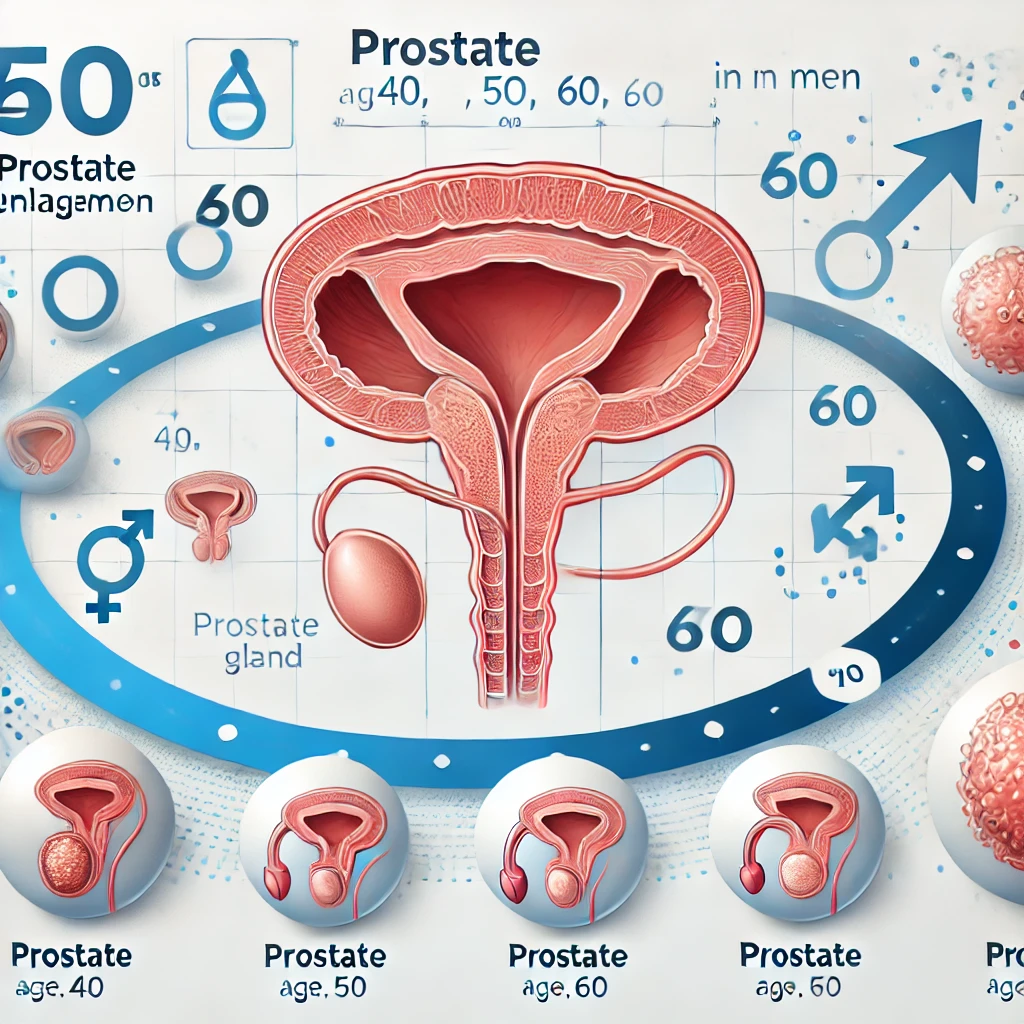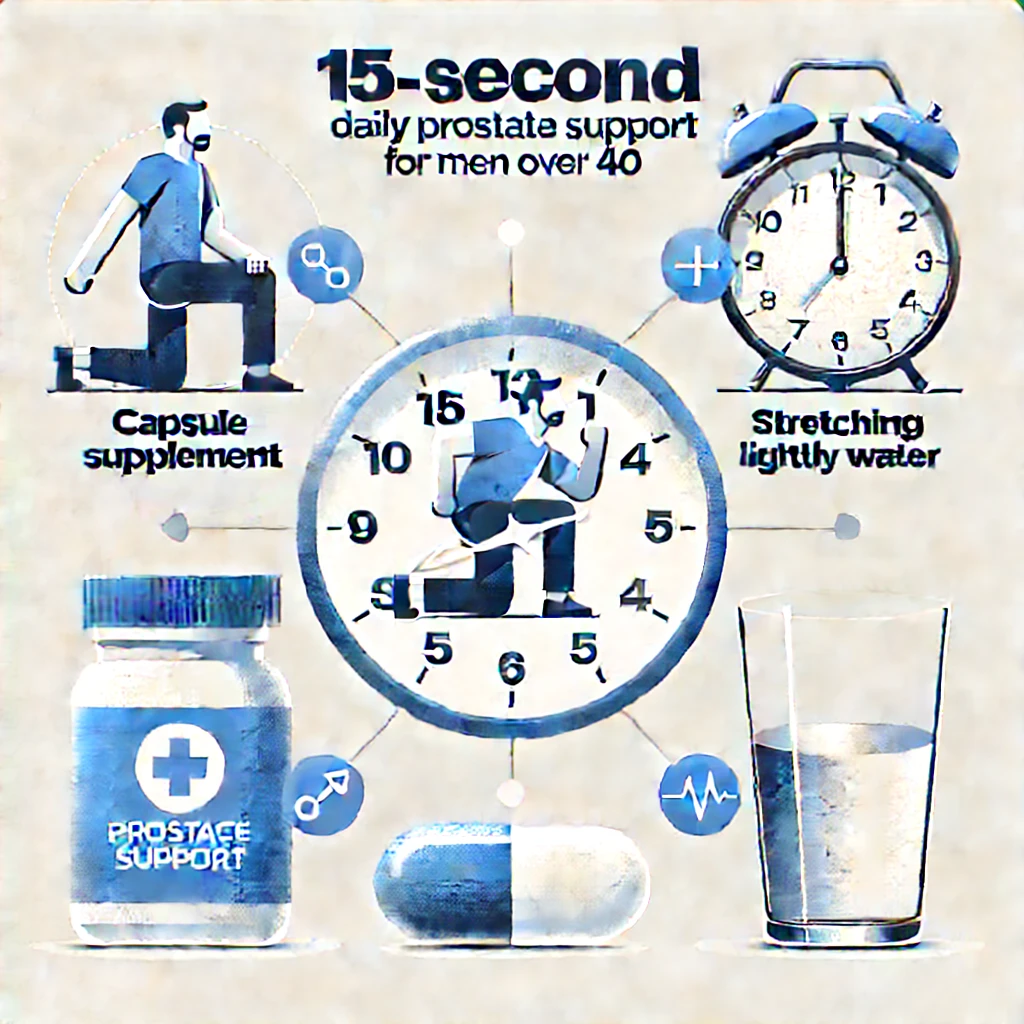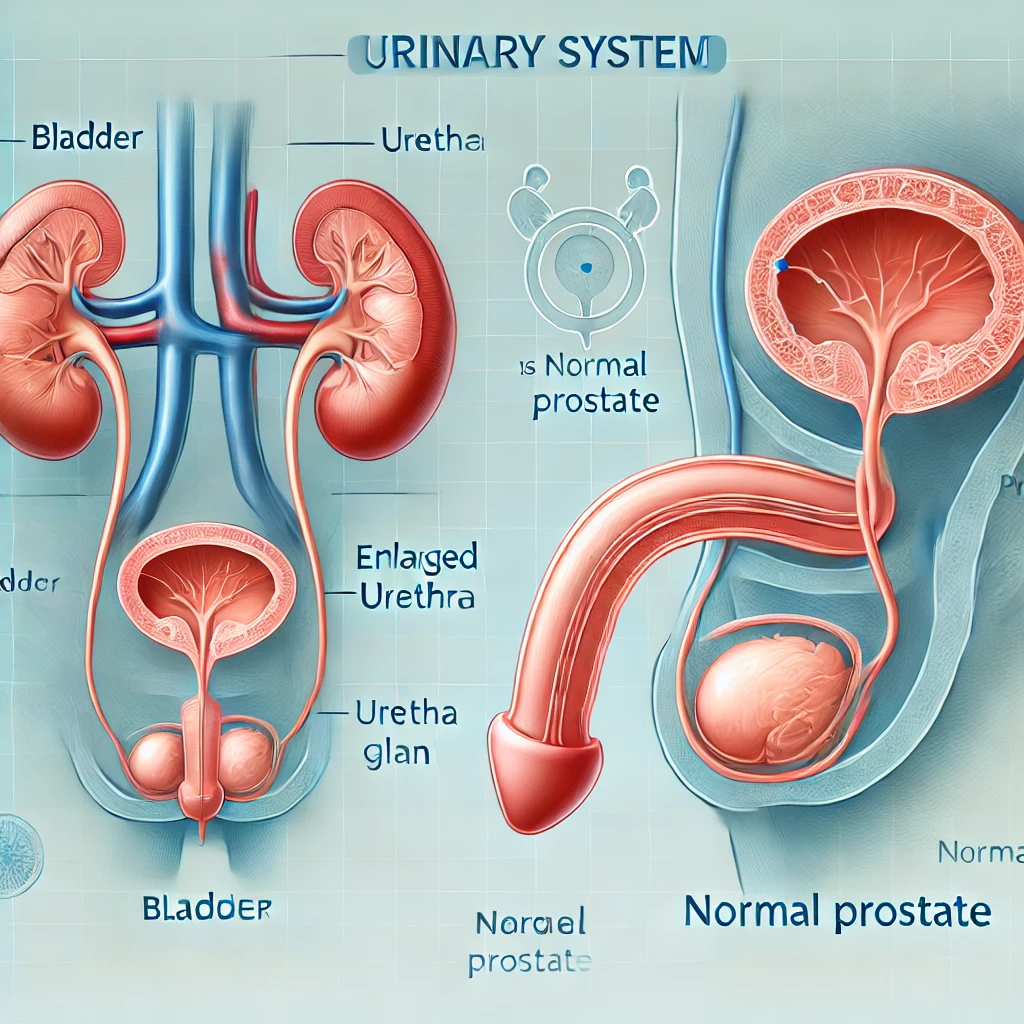🧠 THE PROSTATE SOLUTION: How Plant-Based Science Is Redefining Male Wellness After 40
By Dr. Richard Langford, MD – Men’s Health Researcher | Independent Contributor
“Prostate issues after 40 aren’t inevitable. They’re the result of chronic inflammation and hormone imbalance — both of which can be addressed through evidence-based intervention.”
🔬 INTRODUCTION: THE QUIET EPIDEMIC
Prostate enlargement, or benign prostatic hyperplasia (BPH), is one of the most common age-related conditions in men — yet it’s rarely discussed openly. By age 50, over half of men show signs of BPH. By age 80, that number exceeds 90%.
For decades, BPH was seen as a passive consequence of aging. But today, a growing body of research is reframing BPH as a modifiable inflammatory and hormonal condition — not a fixed fate.
At the forefront of this new understanding is a class of plant-based compounds with anti-inflammatory, hormonal, and antioxidant properties that may offer an effective, low-risk alternative to pharmaceuticals.

⚙️ THE ROOT CAUSES: BEYOND JUST AGE

The prostate grows due to a complex interplay of:
- Elevated DHT (dihydrotestosterone), a potent form of testosterone
- Chronic low-grade inflammation
- Oxidative stress damaging prostate cells
- Hormonal imbalances, including rising estrogen and falling testosterone
Modern phytotherapy research has identified natural compounds that influence these pathways directly — offering a way to manage symptoms while supporting long-term prostate health.
🔬 SCIENTIFICALLY-BACKED MECHANISMS

1. Saw Palmetto Extract
Blocks the 5-alpha-reductase enzyme, reducing the conversion of testosterone into DHT (Barry, NEJM 1998; Wilt, JAMA 1998). Also shown to relieve urinary symptoms.
2. Pygeum Africanum
Reduces inflammation and fibrosis in the prostate, and improves urinary flow (Carraro, The Prostate, 1996; Chatelain, Prostate Supplement, 1999).
3. Grape Seed Extract
One of the most potent plant-based antioxidants, GSE reduces oxidative stress, supports tissue repair, and has shown benefits for urinary function (Bagchi, Toxicology 2000; Yamakoshi, J Agric Food Chem 2002).
4. Pumpkin Seed Extract
Rich in phytosterols, shown to reduce prostate volume and support bladder function (Vahlensieck, WJU 2015; Gossell-Williams, Phytother Res 2006).
5. Nettle Root Extract
Targets inflammation and hormone binding in the prostate (Safarinejad, J Herb Pharmacother 2005; Krzeski, BJU Int 1993).
6. Boron
Linked to improved testosterone balance and lower prostate cancer risk (Cui, Am J Epidemiol 2004; Zeng, J Trace Elem Med Biol 2011).
7. Lycopene
Carotenoid with strong antioxidant and anti-proliferative effects on prostate cells (Giovannucci, J Natl Cancer Inst 1995; Chen, AJCN 2001).
8. Vitamin E & Vitamin B6
Antioxidant and hormonal support. Vitamin E protects prostate cells from oxidative damage, while B6 regulates hormone metabolism (Chan, Am J Epidemiol 1999; Cheng, AJCN 2010).
🧪 A MULTI-PATHWAY NATURAL STRATEGY

Conventional drugs typically focus on one action (e.g. alpha-blockers or DHT inhibitors). But the botanical compounds above work synergistically across multiple axes:
- Block excess DHT without eliminating testosterone
- Soothe inflammation and oxidative damage
- Improve urinary flow and bladder emptying
- Support hormonal balance and cell protection
This multi-pathway model mirrors what is now considered best practice in integrative men’s health.
🧠 WHY IT MATTERS FOR MEN OVER 40
After age 40, the following shifts occur:
- Increase in DHT activity
- Accumulation of inflammation in prostate tissue
- Hormonal imbalance (testosterone ↓ / estrogen ↑)
- Higher oxidative stress
Left unchecked, these changes contribute to:
- Frequent urination (especially at night)
- Weak stream and dribbling
- Sexual dysfunction
- Pelvic discomfort or urgency
A botanical-based intervention, if applied early, may help preserve function, comfort, and long-term quality of life.
🧩 DAILY ROUTINE FOR NATURAL SUPPORT
Clinical evidence supports the use of a once-daily botanical protocol combining these ingredients for men experiencing:
- Nighttime urination (nocturia)
- Urgency or weak flow
- Feeling of incomplete emptying
- Mild swelling or discomfort
Most protocols suggest consistent use for 8–12 weeks to observe full effects. Improvements may include:
- Fewer nightly bathroom trips
- Stronger flow and relief from pressure
- Increased comfort and energy
- Better mood, sleep, and sexual health
📈 SAFETY AND LONG-TERM BENEFITS
These natural compounds have been used in clinical and traditional settings for decades, with a strong safety profile:
- GRAS (Generally Recognized As Safe)
- No known risk of dependency
- No negative impact on libido or mood
Often protective against long-term prostate dysfunction

🔍 CONCLUSION: A SMARTER APPROACH TO PROSTATE HEALTH
Prostate symptoms don’t appear overnight. They develop slowly — driven by inflammation, hormone imbalance, and oxidative stress.
Science now shows that these systems can be supported naturally, using botanicals validated by modern research. For men over 40, this approach represents a smarter, safer path toward maintaining:
- Urinary comfort
- Restful sleep
- Hormonal integrity
- Long-term prostate wellness

🧾 REFERENCES
- “Saw Palmetto Extract and Its Role in Supporting Prostate Health” – Wilt TJ, et al. (JAMA, 1998)
- “Pygeum Africanum Extract: Clinical Evidence in Managing Benign Prostatic Hyperplasia” – Carraro JC, et al. (The Prostate, 1996)
- “Grape Seed Extract: Antioxidant Properties and Its Impact on Prostate Health” – Bagchi D, et al. (Toxicology, 2000)
- “Pumpkin Seed Extract and Its Effectiveness in Improving Urinary Function in Men with Enlarged Prostate” – Vahlensieck W Jr., et al. (World Journal of Urology, 2015)
- “Nettle Root (Urtica dioica) and Its Role in Prostate Health Management” – Safarinejad MR (Journal of Herbal Pharmacotherapy, 2005)
- “Boron: Its Potential Benefits in Supporting Prostate Health and Reducing Cancer Risk” – Cui Y, et al. (American Journal of Epidemiology, 2004)
- “Lycopene’s Effectiveness in Supporting Prostate Health and Reducing Cancer Risk” – Giovannucci E (Journal of the National Cancer Institute, 1995)
- “Vitamin E: Antioxidant Benefits and Its Role in Prostate Health” – Chan JM, et al. (American Journal of Epidemiology, 1999)
- “Vitamin B6 and Its Potential Role in Reducing Prostate Cancer Risk” – Cheng TY, et al. (American Journal of Clinical Nutrition, 2010)
- “Saw Palmetto and Its Effectiveness in Treating Symptoms of Benign Prostatic Hyperplasia” – Barry MJ (The New England Journal of Medicine, 1998)
- “Pygeum Africanum’s Role in Improving Urinary Symptoms Associated with Enlarged Prostate” – Breza J, et al. (Current Therapeutic Research, 1998)
- “The Antioxidant Properties of Grape Seed Extract and Its Benefits for Prostate Health” – Shi J, et al. (Journal of Medicinal Food, 2003)
- “Pumpkin Seed Oil: Clinical Studies on Its Benefits for Prostate Health and Urinary Function” – Gossell-Williams M, et al. (Phytotherapy Research, 2006)
- “Nettle Root Extract and Its Potential to Alleviate Prostate Symptoms” – Lichius JJ, et al. (Planta Medica, 1999)
- “Boron’s Role in Modulating Hormones and Supporting Prostate Health” – Nielsen FH (Environmental Health Perspectives, 1994)
- “Lycopene’s Antioxidant Role and Its Effects on Prostate Cells” – Chen L, et al. (American Journal of Clinical Nutrition, 2001)
- “The Role of Vitamin E in Maintaining Prostate Health: A Review” – Heinonen OP, et al. (Journal of the National Cancer Institute, 1998)
- “The Impact of Vitamin B6 on Prostate Cancer Risk Reduction” – Ericson U, et al. (Cancer Epidemiology, Biomarkers & Prevention, 2007)
- “Saw Palmetto’s Anti-Inflammatory Properties and Its Role in Prostate Health” – Di Silverio F, et al. (Prostate, 1998)
- “Pygeum Africanum’s Effect on Prostate Inflammation and Urinary Health” – Chatelain C, et al. (Prostate Supplement, 1999)
- “Grape Seed Extract: Its Role in Reducing Oxidative Stress and Supporting Prostate Health” – Yamakoshi J, et al. (Journal of Agricultural and Food Chemistry, 2002)
- “The Potential Benefits of Pumpkin Seed Oil in Supporting Prostate Health” – Tsai YS, et al. (Nutrition Research, 2006)
- “Nettle Root Extract and Its Impact on Prostate Cell Function and Inflammation” – Schottner M, et al. (Phytochemistry, 1997)
- “Boron Intake and Its Association with Reduced Prostate Cancer Risk” – Zeng H, et al. (Journal of Trace Elements in Medicine and Biology, 2011)
- “Lycopene as a Chemopreventive Agent for Prostate Health” – Giovannucci E, et al. (Cancer Research, 1999)
- “Vitamin E’s Antioxidant Properties and Its Effects on Prostate Health” – Huang HY, et al. (American Journal of Clinical Nutrition, 2003)
- “The Role of Vitamin B6 in Hormone Regulation and Prostate Health” – Tamura T, et al. (Nutrition Reviews, 1994)
- “Saw Palmetto’s Mechanism of Action in Prostate Health Support” – Brinker FJ (HerbalGram, 2000)
- “The Influence of Pygeum Africanum on Prostate Cell Health and Function” – Lopatkin NA, et al. (Urologiia, 2007)
- “The Benefits of Grape Seed Extract in Supporting Healthy Urinary Function and Prostate Health” – Park YH, et al. (Nutrition Research and Practice, 2014)
- “The Impact of Pumpkin Seed Extract on Prostate Health and Hormonal Balance” – Adamson RH, et al. (Nutrition, 1997)
- “Nettle Root and Its Anti-Inflammatory Effects on Prostate Health” – Krzeski T, et al. (BJU International, 1993)